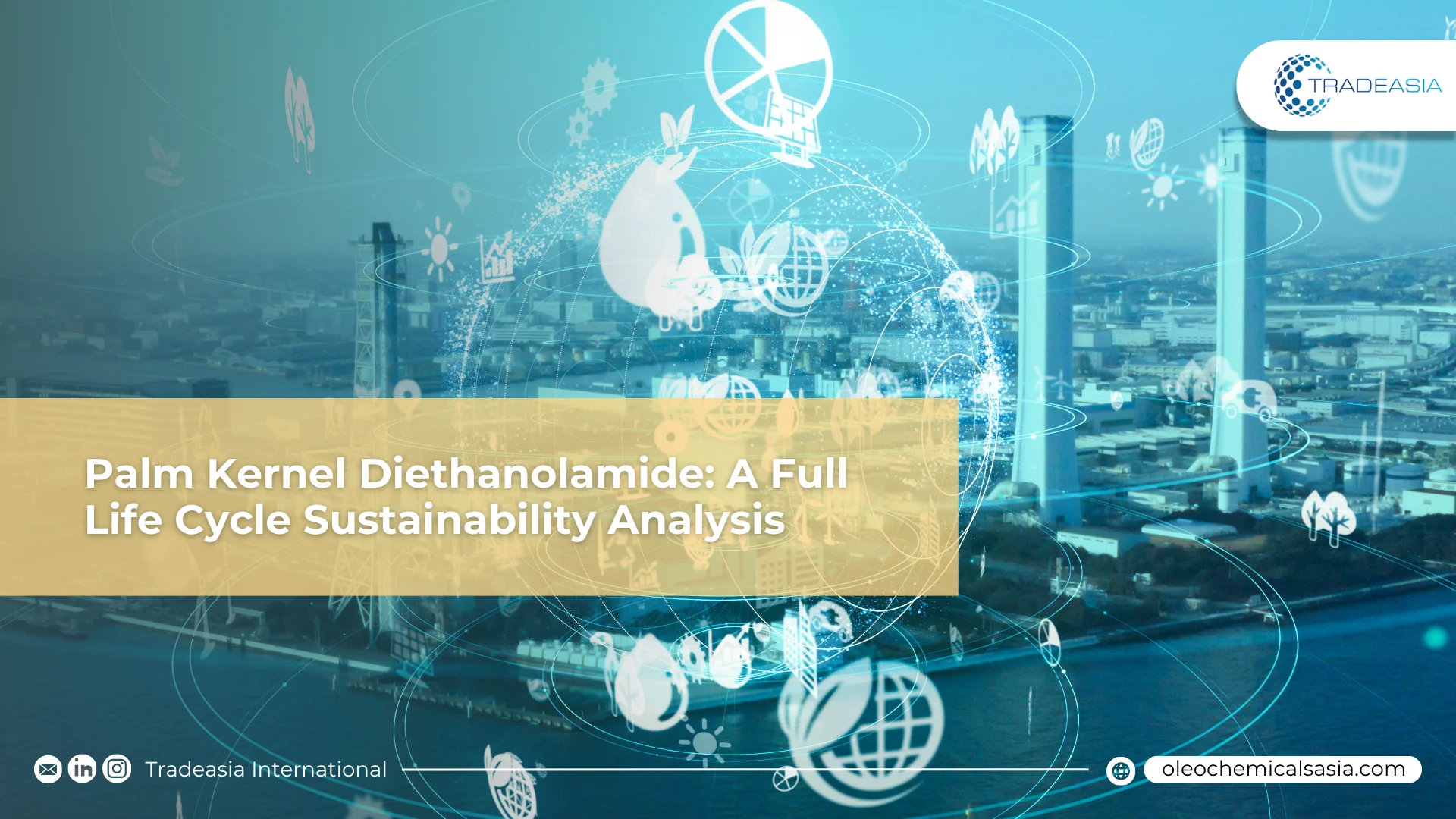Palm Kernel Diethanolamide: A Full Life Cycle Sustainability Analysis

Table of Content
-
The Manufacturing Footprint: A Water & Energy Deep Dive
-
The 100% Valorization Goal: R&D in Circularity
Sustainability for Palm Kernel Diethanolamide is a two-part story. While feedstock certification (RSPO) rightly gets the headlines, a product's true environmental impact is measured across its entire life cycle—from its manufacturing footprint to its co-product circularity.
This "full picture" sustainability is what separates commodity suppliers from true strategic partners. Tradeasia International actively champions this shift by partnering with producers who invest in Life Cycle Assessment (LCA) and circular process R&D. Their role is to supply oleochemicals that are not only bio-based but also backed by transparent data on their energy and water footprint.
The Manufacturing Footprint: A Water & Energy Deep Dive
Modern "green" R&D now focuses heavily on water and energy inputs. Manufacturing 1 ton of surfactants can traditionally consume 3,000 to 5,000 liters of fresh water. However, R&D in "closed-loop" water recycling systems is now cutting this freshwater intake by over 40% in new plants. Furthermore, producers are tackling their Scope 1 emissions by shifting from natural gas to biomass boilers, often fueled by the palm plantation's own empty fruit bunches (EFB). This single shift has been shown to cut direct manufacturing emissions by 20-30%.
"Our customers now demand our LCA data," explained a plant manager. "They want to see our kg CO2-eq per ton and our water use ratio. We source traceable, sustainable palm, and we must process it in a facility that proves its own environmental credentials."
The 100% Valorization Goal: R&D in Circularity
True sustainability also means designing waste out of the system. In older models, the ~10% of the feedstock that becomes crude glycerine was a low-value (or even negative-value) co-product. Modern R&D, however, treats this as a "circularity" challenge. New purification processes now cost-effectively upgrade this stream to 99.7% pharmaceutical-grade glycerine, achieving 100% feedstock valorization. This circular model not only eliminates waste but also adds 5-8% back to the plant's bottom line, proving that sustainability and profitability can drive each other.
Sources:
-
Oleochemicals Asia: APAC Industrial Chemical Market News
-
Journal of Cleaner Production: LCA of Surfactant Manufacturing
-
KLK Oleo: Corporate Sustainability & Process Reports

Leave a Comment